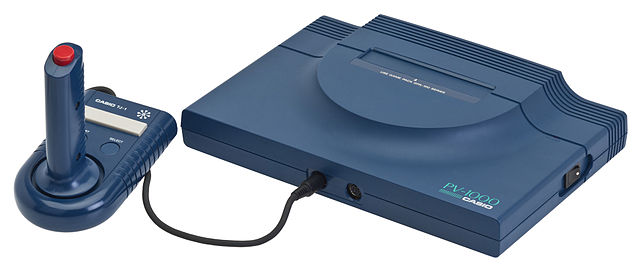Casio PV-1000 Review: A Forgotten Gem of the 80s
Released in 1983, the Casio PV-1000 is one of the most obscure consoles in the history of home gaming. Developed by Casio, a company better known for calculators and watches than video games, the PV-1000 was an attempt to break into the 8-bit console market. Despite its ambition, the Casio PV-1000 failed to make a significant impact, but it still stands as an interesting relic from a time when competition in the video game industry was fierce, with numerous companies vying for a slice of the home entertainment pie.
Design & Build
The Casio PV-1000 has a design that immediately feels retro, even by 1983 standards. The console's body is a mix of black plastic with simple control ports and a distinctive, boxy shape. It lacks the flashiness of some contemporaries like the NES or the Sega Master System, but it's still a serviceable design that reflects the minimalist, functional aesthetic of the era.
What stands out is the controller. The PV-1000 uses a small joystick with a button layout that was both compact and basic, but not very comfortable for extended gaming sessions. The joystick itself was more like a paddle controller than a true joystick, and while it worked for the system's games, it wasn't the most ergonomic.
The console's build quality was generally decent, though the lack of major ergonomic innovation or premium materials showed that Casio was not focused on long-term durability or high-end features. Still, its simplicity helped it remain affordable.
Game Library & Performance
The Casio PV-1000 was built to play cartridges, but its game library was quite limited. In fact, there were only around 20 games released for the system, most of which were basic arcade-style titles and platformers. Some titles, like "Ninja" and "Block Kuzushi", showed potential, but the selection was ultimately underwhelming when compared to the more robust libraries of consoles like the Atari 2600 or the Famicom (NES).
The performance of the PV-1000 was on par with other 8-bit systems, but not particularly groundbreaking. The graphics were acceptable for the time but lacked the color depth and smoothness of other systems. The sound was also basic, with limited capabilities that didn't compare to the rich soundscapes of its competitors.
Despite this, the PV-1000 had a few things going for it. The graphics were clear enough for its simple games, and the sound effects were adequate, though basic. However, it didn't quite have the wow factor of more established systems of the era.
Market Performance & Legacy
The Casio PV-1000 had a very short lifespan. It was released during a time when the home console market was rapidly evolving, with major players like Nintendo and Sega making waves with their more powerful systems. While the PV-1000 was a modestly priced option, it couldn't compete with the much more well-funded and marketed consoles that were on the market.
Casio's lack of focus on the gaming market, combined with a small library of games, limited the PV-1000's appeal. It was eventually discontinued, and its legacy has largely been forgotten in the shadow of more successful consoles. While the PV-1000 didn't have the impact that some of its competitors did, it remains a curious footnote in the history of video game consoles.
However, for collectors and retro gaming enthusiasts, the Casio PV-1000 is an interesting piece of gaming history. It's a system that never got its due recognition but remains a fun relic of an era when almost anyone with the right resources could try to make a console.
Limitations & Drawbacks
-
Limited Game Library: With only a handful of titles available, the PV-1000's library didn't have the variety needed to capture a wide audience.
-
Basic Graphics & Sound: The Casio PV-1000 was capable of decent graphics for its time, but it lacked the visual flair of its contemporaries. The sound was also simplistic and didn't contribute to the immersive experience that other systems offered.
-
Lack of Innovation: While it was an affordable entry into the gaming world, the PV-1000 didn't offer any major innovations that would make it stand out. It failed to distinguish itself in an increasingly competitive market.
Final Verdict
The Casio PV-1000 was a simple, functional system with an intriguing premise, but it was ultimately a victim of bad timing and limited resources. While it offered a modest gaming experience and a handful of enjoyable, if basic, titles, it lacked the marketing muscle and game variety necessary to compete with more prominent systems of the era.
For retro gaming enthusiasts or collectors, the Casio PV-1000 is a fun curiosity. It may not have been a game-changer, but it's still a part of the history of home consoles, one that deserves a place in discussions about the early years of the video game industry.
Score: 5/10
A console that tried to carve a niche in a crowded market but was ultimately overshadowed by more popular systems. Still, it offers a nostalgic glimpse into the 80s gaming landscape.
If you're into obscure gaming history or enjoy digging deep into forgotten consoles, the Casio PV-1000 may be worth checking out.


